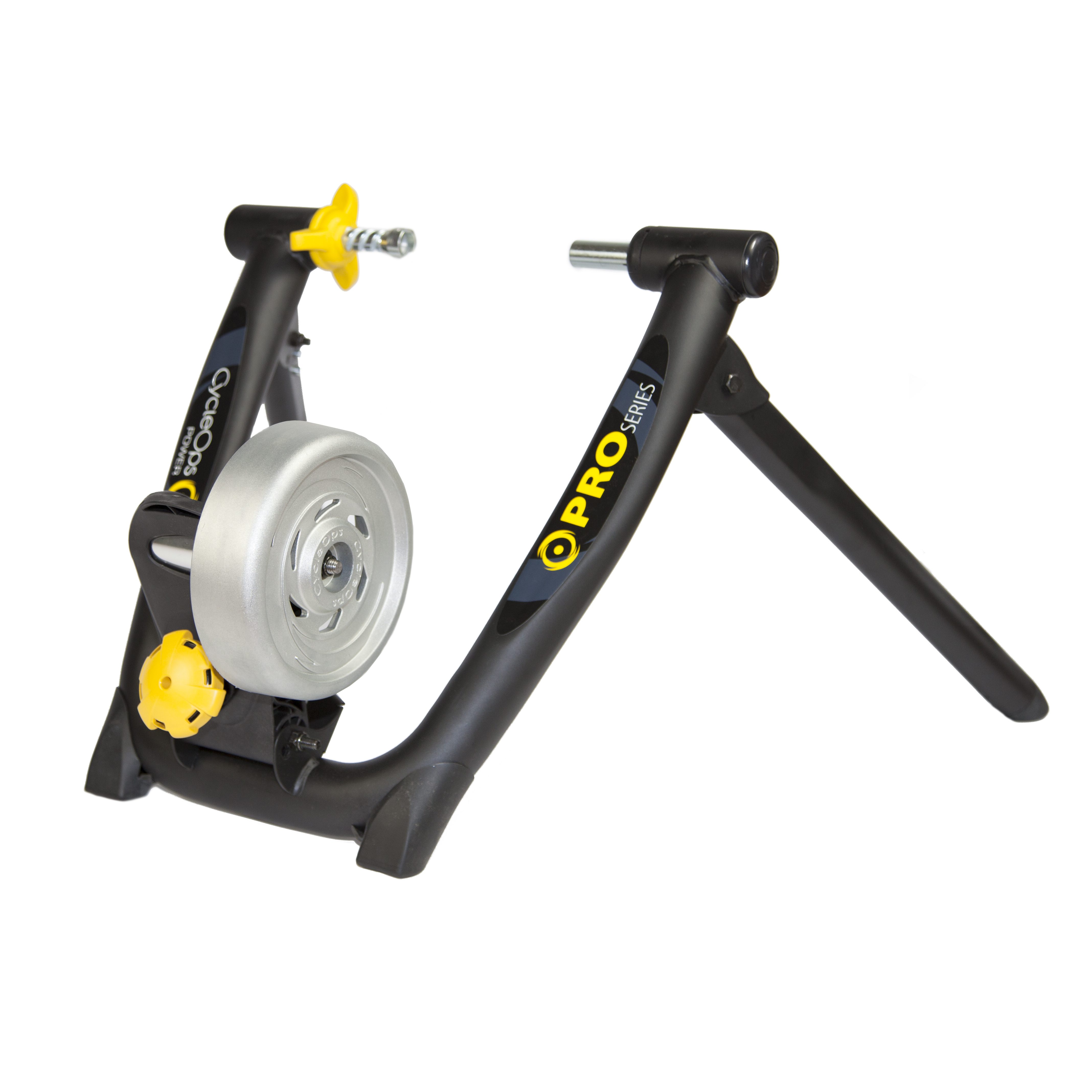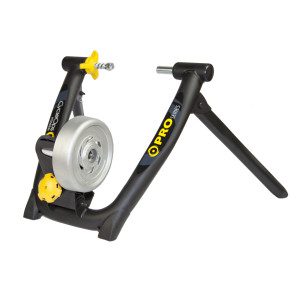Ride with Precision: CycleOps PowerBeam Pro

 $1,350 Bluetooth Version, ANT+ Version
$1,350 Bluetooth Version, ANT+ Version
$1,620 ANT+ with Joule GPS Version
As a former professional Ironman triathlete and coach who has been teaching cycling classes for over 10 years, I am wellacquainted with the many different power trainers on the market and with what athletes are looking for in a trainer. For the past two years I have been teaching on the CycleOps PowerBeam Pro trainers equipped with individual iPads featuring the CycleOps Virtual Training software.
Despite having 10 trainers in the room, the set up is neat – the only wire for the unit is the power cable. The Powerbeam Pro is extremely smooth and exceptionally quiet even in a small room full of trainers.
Riders can also choose to ride specific watts, which is a nice feature, however, I like to use the ergo mode where resistance is altered by changing gears because it simulates outdoor riding more closely. One can also add resistance by adding a slope of 0.2 per cent to 10 per cent grade. I like this feature because sometimes adding gradient is best when a complete gear shift is too big.
Setting up the Powerbeam Pro is easy. Just pop in a compatible trainer skewer, fit the back wheel in the trainer frame, then turn the knob at the back of the trainer until a ‘click’ is heard to add the appropriate amount of pressure on the tire. On occasion, riders feel some slippage (especially at low rpm and high watts, or when accelerating from a standstill). I have found that holding the resistance wheel up against the tire and then turning the knob seems to solve this problem.
Riders should spin for a few minutes before calibrating. Calibration is achieved by riding between 29 and 35km/hr for two minutes and the amount of tension on the wheel is calculated by measuring the time it takes for the bike to then roll to a stop. For the most part this is a straightforward process, however, if the rider falls below or goes above the requested range at all (even for a split second), or if the rider does not stay perfectly still on the pedals after the countdown is over, calibration fails and the rider must recalibrate.
One downside I have noticed is that there is about a five second time lag for the power reading to “catch up.” Therefore, when doing short intense intervals (less than 30 seconds), there isn’t much time left to do the interval once the resistance and power readings kick in.
Athletes love the display graph on Virtual Training software. With ANT+ sensors, rpm and heart rate can be displayed along with the power, speed and time readings. Seeing the peaks and valleys on the graph is great, and I use the visual to help motivate riders in my class. Once the workout is complete riders can look at many statistics including readings for maximum power, power for specific timed intervals (best watts average for one minute, etc.), normalized power, and so on.
All in all the PowerBeam Pro trainers are among the best on the market and power readings are consistently within five per cent of PowerTap and Garmin Vector readings – a huge bonus for programming specific watts on rides my athletes do outside. I can be confident the work they’ve done indoors can be replicated on the road.
